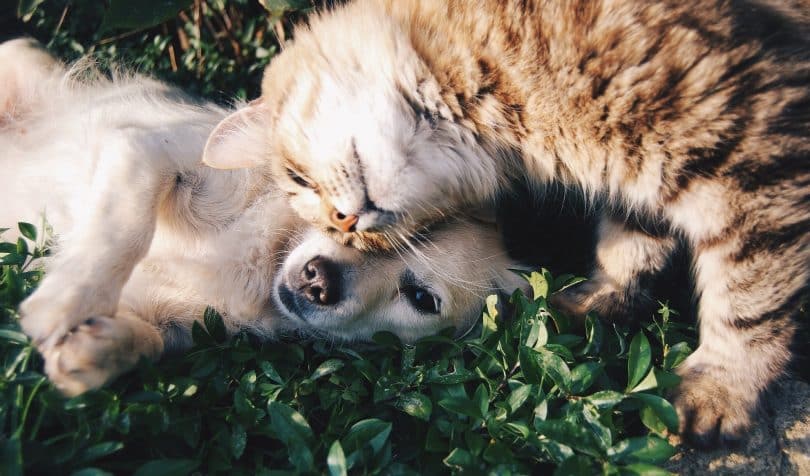Despite what you may have seen in cartoons or comics, dogs and cats can become the best of pals. In fact, there are many dog breeds that seem to get along great with cats and accept them as part of the pack. With the right breed choice, there’s no need to worry about aggressive behaviors, wild chases, or fights.
If you’ve been on the fence with your decision to bring home a new BFF because you aren’t sure whether that could cause an issue with your friendly feline, pay close attention to this list. It’s sure to clear up any concerns you may have.
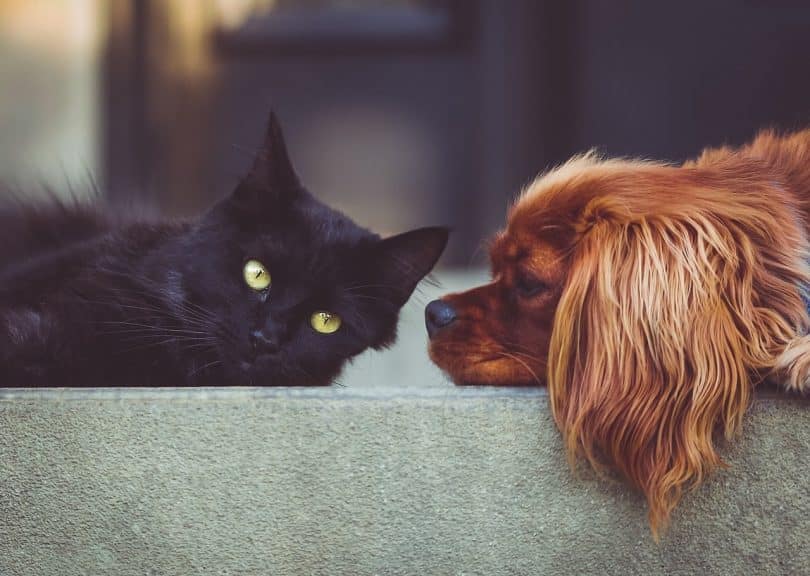
The Best Breeds For A Home With Cats
1. Golden Retriever
2. Bichon Frisé
3. Labrador Retriever
4. Papillion
5. Basset Hound
6. Beagle
7. Bulldog
8. Collie
9. Cavalier King Charles Spaniel
10. Cocker Spaniel
1. Golden Retriever
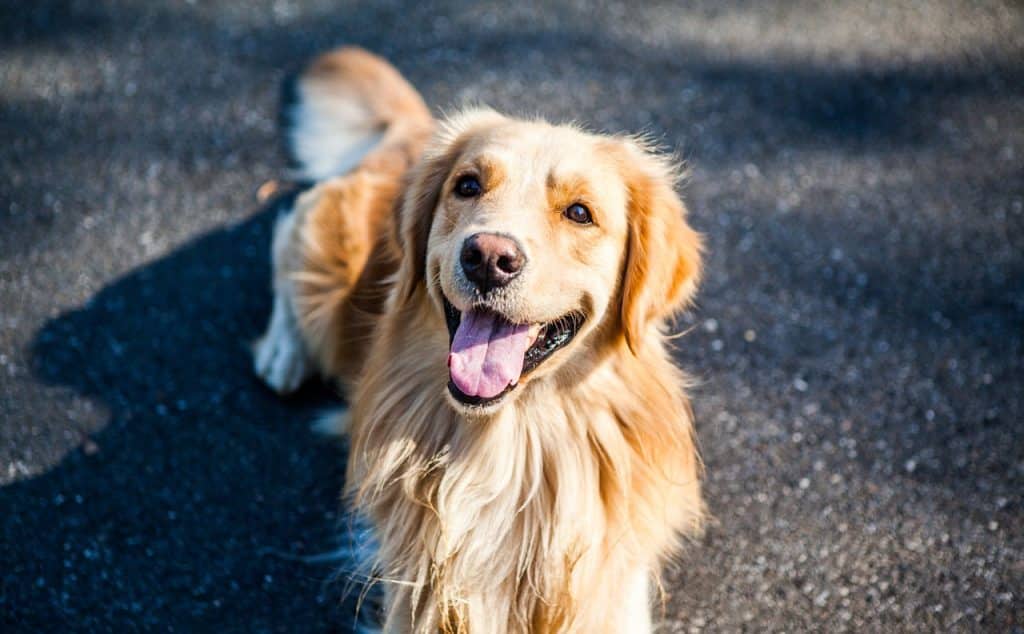
You really can’t go wrong with this majestic breed. Golden Retrievers are incredibly friendly and they’re also one of the gentlest breeds around. These fur babies get along with everyone and everything which makes them the perfect fit for a home with cats.
2. Bichon Frisé

Well known for having an incredibly happy personality as well as a calm attitude, this breed typically gets along great with cats. Bichon Frisés are also really cute which adds to the many reasons they fit in well in nearly any household.
3. Labrador Retriever

Labs are another breed that has endless benefits to offer. They’re extremely loyal, very well behaved, and seem to make friends with cats with ease. One thing is for certain. You’ll have nothing to worry about if you bring one of these adorable furballs home.
4. Papillion

This is a breed with a really interesting past. Papillions were actually bred long ago for a specific reason. Believe it or not, these fur babies were bred to serve as lapdogs for noblewomen. Their past seems to have helped them become extremely friendly as well as easily able to adapt to any situation.
5. Basset Hound

Mild-mannered and very kind, the Basset Hound is a breed that works very well with feline friends. They are also quite patient which is definitely a big plus. They aren’t the easiest dogs to train but they more than make up for that in several different ways, especially when it comes to their loving nature.
6. Beagle

Understandably, some people may think this is a typo. After all, Beagles were bred to be hunting dogs. However, there’s no need to worry about your new BFF hunting your cats. In fact, you can expect the exact opposite to happen. It’s ingrained in this breed’s DNA to be part of a pack. A Beagle won’t see a cat as prey, but rather as a member of the family.
7. Bulldog
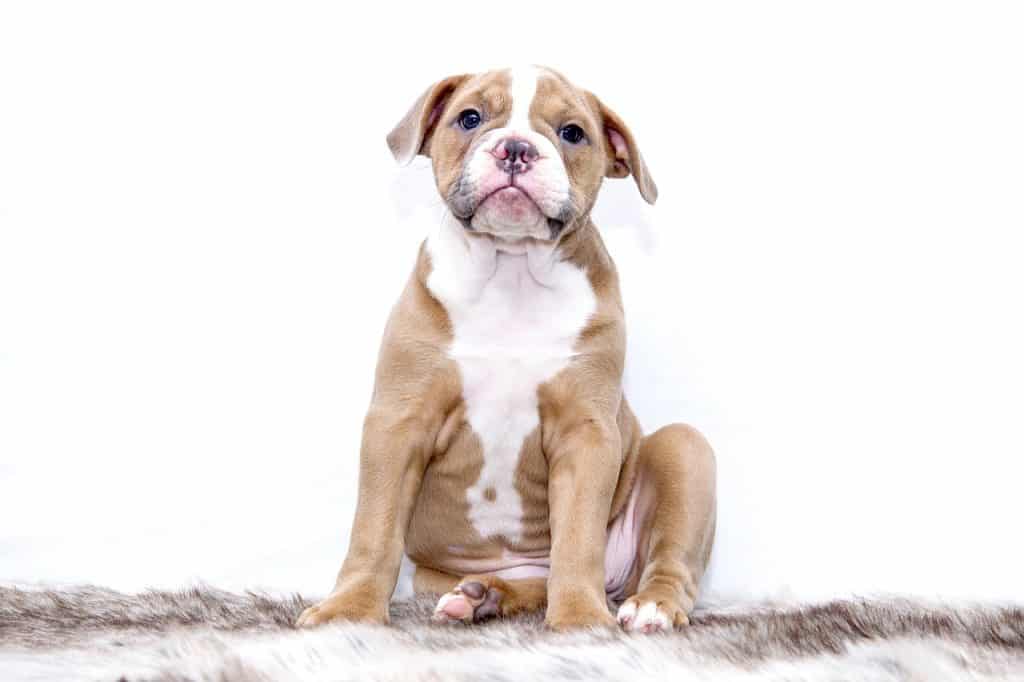
Don’t let the name fool you. These fur babies are actually incredibly calm and they never have a problem making new friends. Their size may intimidate a cat upon first impressions, but they’ll quickly learn that their new furry friend has a heart of gold.
8. Collie
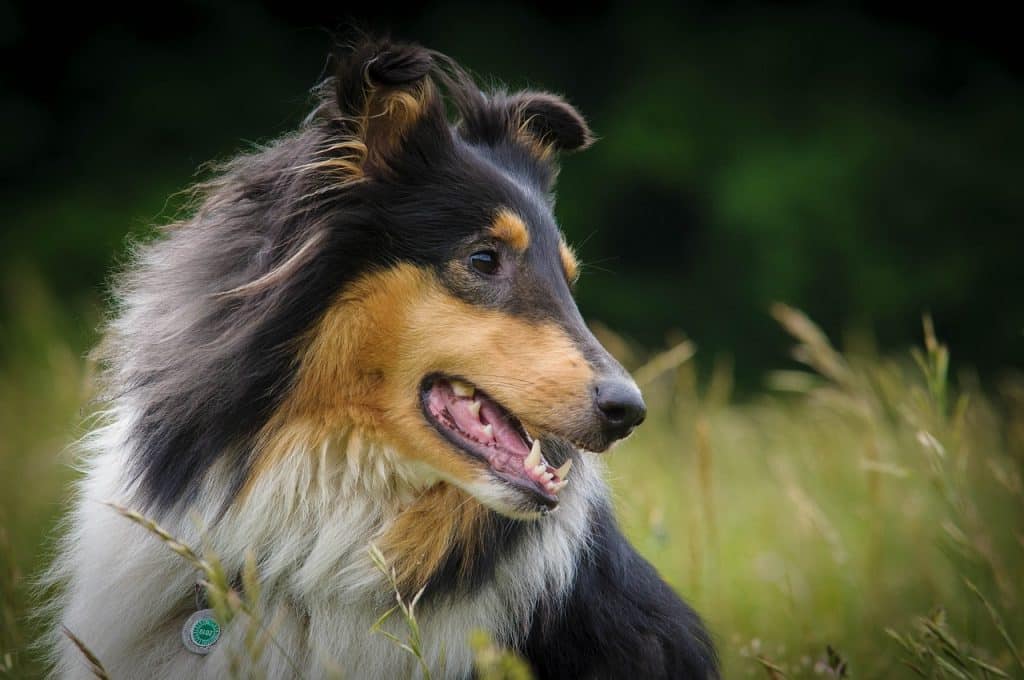
Collies are notorious for being great with children. They are highly tolerant and enjoy showing their love. Kids aren’t the only thing this breed gets along well with. They’re also well-known for not only accepting cats but treating them as a member of the family as well. Just make sure your new furry BFF doesn’t begin to show herding behaviors. Needless to say, this is something a cat would not enjoy.
9. Cavalier King Charles Spaniel

Small in size but big in affection, Cavalier King Charles Spaniels get along with all animals. Their fearless personality will keep them from becoming intimidated by a cat, but there won’t be any need to worry about aggressive behaviors. These fur babies are extremely adaptable which allows them to approach any situation with confidence, kindness, and gentleness.
10. Cocker Spaniel

This breed has a lot more to offer than just adorable looks. If you’re looking for a new BFF that’s playful, loving, and incredibly curious, this could be the right choice for you. On top of everything else they have to offer, they are also known for being gentle and loving with cats.
So, after reading about the best breeds for a home with cats, do you think you and your furry feline could use a new friend at home? I sure hope so and I also hope that you decide to adopt rather than shop. There are countless pooches waiting for an opportunity to get their shot at a home and a family. You could be the person that makes everything change for them!
Frequently Asked Questions
What dogs can live with cats?
There are several different types of dogs that get along perfectly fine with cats. In fact, almost any breed can live in the same house as a feline and often even become pals with them. Some of the best dogs to bring home to a cat are toy breeds and sporting breeds due to their personalities, friendliness, and outgoing nature. On the other hand, herding breeds, hounds, and terriers might not be the best fit.
Are female or male dogs better with cats?
In most cases, animals of the opposite sex tend to get along better. However, that doesn’t mean that a dog and a cat of the same sex can’t live in the same house. All dogs and cats are different so the best way to make sure there will be no issues is to keep a close eye on your furry friends until they get to know each other.
Is a dog a good companion for a cat?
Yes, as long as their personalities do not clash. It’s not uncommon for cats and dogs to become the best of friends. This becomes especially true when it comes to dogs that enjoy being part of a pack because they won’t see the cat as anything different from them but rather just a part of their family.
How do you test a dog with a cat?
Cat testing a dog is actually a fairly simple process. First, you’ll want to place your cat inside of a crate and place your dog on a leash. Next, you’ll want to allow your four-legged friend to sniff the cat through the cage while monitoring their behavior. If all seems well, take the cat out of the cage and hold it. If there are no issues, place the cat on the floor and allow your dog to interact with it. Finally, if everything else has gone well, release your dog from its leash and continue to monitor both of their behavior.
How do I socialize my dog and cat?
The most important part of socializing a dog and a cat is mastering the first impression. You’ll want to make sure both animals are calm, comfortable, and in a good mood before meeting each other. Next, you’ll want to slowly introduce them and keep a close eye on their behavior. If at any time either animal becomes uncomfortable, give them time to calm down and then try again.
How long does it take for a cat to get used to a dog?
Typically speaking, some dogs and cats can begin bonding in as little as 2-3 weeks. However, in some cases, it can happen within a matter of days. On the other hand, it might not happen at all. There’s no way to tell whether or not your pets will get along until you give it a shot.
Can a dog with high prey drive live with a cat?
Dogs with a high prey drive like to chase cats and some might even see them as prey. Needless to say, this is something your feline friend will not enjoy. The good news is in most cases this behavior can be curved with patience and training.
How do I get my dog to stop chasing the cat?
The best method is to stop it before it begins with redirection. You’ll often notice a dog staring or becoming excited before chasing a cat. If you notice this, clap your hands and call the dog. When they redirect their attention to you, make sure to offer them a treat and praise. If the behavior continues or they actually begin chasing the cat, teach your four-legged friend that is not acceptable behavior by placing them in a separate room or crating them until they have calmed down.
What dog breeds are not good with cats?
Typically speaking, you’ll want to avoid any breed that has a history of being a hunting or herding dog. Also, it’s best to avoid dogs that have a high prey instinct. The top five dogs that usually don’t get along with cats are Whippets, Australian Cattle Dogs, Smooth Fox Terriers, Greyhounds, and the Weimaraner.
Will a dog kill a cat?
Unfortunately, it is possible for a dog to kill a cat. However, this is a rare occurrence that usually only happens with poor supervision, lack of training, improper introductions, and insufficient research on which breeds are best to have around cats. In most cases, dogs and cats can live in the same house with no problems at all.
